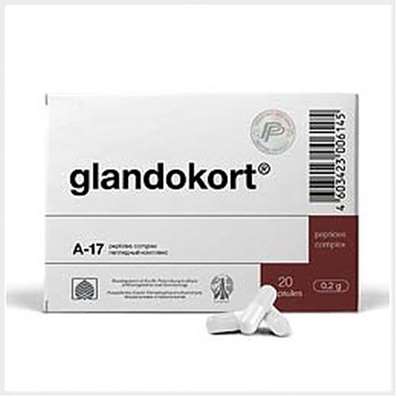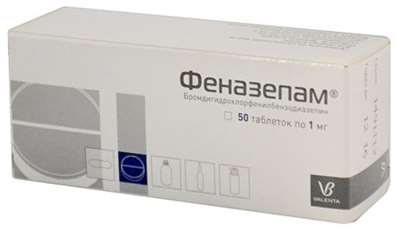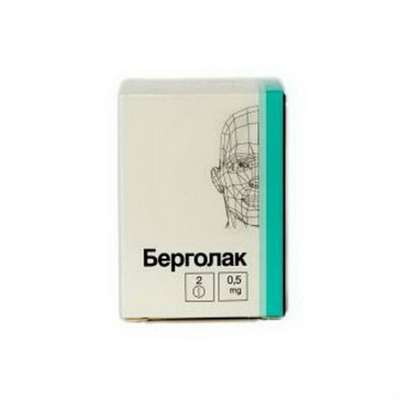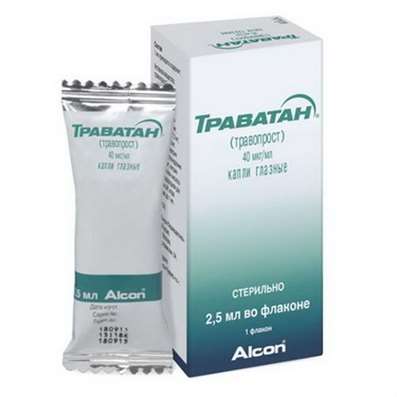Instruction for use: Thiopental sodium
I want this, give me price
Latin name: Thiopentalum Natrium (genus. Thiopentali Natrii)
Chemical name
5-Ethyldihydro-5- (1-methylbutyl) -2-thioxo-4,6- (1H, 5H) -pyrimidinedione monosodium salt
Gross formula
C11H17N2O2SNa
Pharmacological group of substance Thiopental sodium:
Anesthetic means
The nosological classification (ICD-10)
G40.6 Seizures of grand mal, unspecified [with small seizures [petit mal] or without them]: Large seizures (grand mal); Large seizures of epilepsy; Great seizures during sleep; Secondary generalized seizures; Secondary-generalized tonic-clonic seizures; Secondary generalized seizures; Generalized seizures; Generalized tonic-clonic seizures; Generalized seizure; Generalized epileptic seizure; Primary-generalized tonic-clonic seizure; Tonic-clonic convulsions; Tonic-clonic seizures
G41 Epileptic status: Convulsive syndrome; Convulsive status in children
G93.2 Benign intracranial hypertension: Intracranial hypertension; Intracranial hypertension; Persistent cerebral hypertension; Increased intracranial pressure
S06 Intracranial injury: Traumatic brain injury; Craniocerebral injury with predominantly stem lesion level; Condition after traumatic brain injury; Brain Injury; Injuries of the skull; Brain Injury; Brain Injuries; Contusion of the brain; Trauma of the brain; Craniocerebral injury; TBI; Traumatic brain injuries; Consequence of the BTT; Consequence of craniocerebral trauma; Consequence of CCT; CRANIAL INJURY; Traumatic brain injury; Traumatic cerebral; Concussion
Z100 * CLASS XXII Surgical practice: Abdominal surgery; adenomectomy; Amputation; Coronary angioplasty; Angioplasty of the carotid arteries; Antiseptic skin treatment for wounds; Antiseptic Hand; Appendectomy; atherectomy; Balloon coronary angioplasty; Vaginal hysterectomy; The coronary bypass; Interventions in the vagina and cervix; Interventions on the bladder; Intervention in the mouth; Restoration and reconstructive surgery; Hand hygiene of medical personnel; Gynecologic surgery; Gynecological intervention; Gynecological surgery; Hypovolemic shock during operations; Disinfection of purulent wounds; Disinfection of wounds edges; Diagnostic intervention; Diagnostic procedures; Cervical Diathermocoagulation; Long-surgery; Replacing the fistula catheters; Infection in orthopedic surgery; Artificial heart valve; cystectomy; Short-term outpatient surgery; Short-term operation; Short surgical procedures; Krikotireotomiya; Blood loss during surgery; Bleeding during surgery and in the postoperative period; Kuldotsentez; laser photocoagulation; laser coagulation; retinal laser coagulation; Laparoscopy; Laparoscopy in Gynecology; CSF fistula; Small gynecological operations; Small surgical procedures; Mastectomy and subsequent plastic; mediastinotomy; Microsurgical operations on the ear; Mukogingivalnye operation; suturing; Minor surgery; neurosurgical operation; Immobilization of the eyeball in ophthalmic surgery; testectomy; pancreatectomy; Perikardektomiya; The period of rehabilitation after surgery; The period of convalescence after surgery; Percutaneous transluminal coronary angioplasty; Pleural thoracentesis; Pneumonia postoperative and posttraumatic; Preparation for surgical procedures; Preparation for surgery; Preparation of the surgeon's hands before surgery; Preparation of the colon for surgical procedures; Postoperative aspiration pneumonia in neurosurgical and thoracic surgery; Postoperative nausea; Postoperative bleeding; postoperative granuloma; postoperative shock; The early postoperative period; myocardial revascularization; Radiectomy; gastric Resection; bowel resection; uterine Resection; liver Resection; enterectomy; Resection of part of the stomach; Reocclusion of the operated vessel; Bonding tissues during surgical procedures; Removal of sutures; Condition after eye surgery; Condition after surgery; Condition after surgery in the nasal cavity; Condition after gastrectomy; Status after resection of the small intestine; Condition after tonsillectomy; Condition after removal of the duodenum; Condition after phlebectomy; Vascular surgery; Splenectomy; Sterilization of surgical instruments; Sterilization of surgical instruments; sternotomy; Dental surgery; Dental intervention in periodontal tissues; strumectomy; Tonsillectomy; Thoracic surgery; Thoracic surgery; total gastrectomy; Transdermal intravascular coronary angioplasty; Transurethral resection; Turbinektomiya; Removal of a tooth; cataract surgery; Removal of cysts; tonsillectomy; Removal of fibroids; Removing the mobile primary teeth; Removing polyps; Removing broken tooth; Removal of the uterus body; Removal of sutures; Fistula likvoroprovodyaschih ways; Frontoetmoidogaymorotomiya; Surgical infection; Surgical treatment of chronic limb ulcers; Surgery; The surgery in the anal area; The surgery on the colon; Surgical practice; The surgical procedure; Surgical interventions; Surgery on the gastrointestinal tract; Surgical procedures on the urinary tract; Surgical procedures on the urinary system; Surgical intervention of the genitourinary system; Surgical procedures on the heart; Surgical manipulation; surgery; Surgery on the veins; Surgical intervention; Vascular surgery; Surgical treatment of thrombosis; Surgery; cholecystectomy; Partial gastric resection; hysterectomy; Percutaneous transluminal coronary angioplasty; Percutaneous transluminal angioplasty; Coronary artery bypass; tooth Extirpation; Extirpation of milk teeth; pulpectomy; pulsative cardiopulmonary bypass; tooth Extraction; teeth Extraction; cataract extraction; Electrocoagulation; endourological intervention; episiotomy; Etmoidotomiya; Complications after tooth extraction
CAS code
71-73-8
Characteristics of the substance Thiopental sodium
Dry porous mass or powder of yellowish (yellowish-greenish) color with a peculiar smell. Easily soluble in water. Aqueous solutions have an alkaline reaction (pH about 10.0), not struts (prepared immediately before use).
Pharmacology
Pharmacological action - anticonvulsant, anesthesia, sleeping pills.
It prolongs the period of GABA-dependent channels opening on the postsynaptic membrane of neurons of the brain, lengthens the entry time of chloride ions into the nerve cell and causes hyperpolarization of the membrane. In large doses, GABAmimetic effect (directly activates GABA receptors), suppresses the effects of excitatory amino acids (aspartate and glutamate).
Increases the threshold of excitability of neurons and blocks the conduction and spreading of convulsive impulse over the brain (anticonvulsant activity). It suppresses polysynaptic reflexes and slows down the spinal cord by insertion neurons, contributing to muscle relaxation. Reduces metabolic processes in the brain, the utilization of glucose and oxygen by the brain. Sleeping effect is manifested by accelerating the process of falling asleep and changing the structure of sleep. Oppresses the respiratory center and reduces its sensitivity to carbon dioxide. Causes cardiodepression. Reduces stroke volume, cardiac output and BP, increases the capacity of the venous bed; reduces hepatic blood flow and glomerular filtration rate.
After IV introduction quickly penetrates into the brain and is well circulating (skeletal muscles, kidneys, liver) and fat (concentration in fat depots above plasma 6-12 times) tissue. Binding to plasma proteins - by 80-86%; passes through the placental barrier, is secreted into breast milk. T1 / 2 in the phase of distribution - 5-9 minutes. It is subject to biotransformation in the liver with the formation of inactive metabolites (a small part is inactivated in the kidney and brain). Elimination T1 / 2 is 10-12 hours Excreted mainly by the kidneys.
After IV introduction, the effect develops in 40 seconds, and in the rectal - after 8-10 minutes; duration of anesthesia - up to 15 min. Upon repeated administration, the action is prolonged (cumulates).
Application of substance Thiopental sodium
IV anesthesia with short-term surgical interventions, introductory and basic anesthesia with balanced anesthesia using analgesics and muscle relaxants, large seizures (grand mal), status epilepticus, increased intracranial pressure, prevention of brain hypoxia in craniocerebral trauma.
Contraindications
Hypersensitivity, bronchial asthma, asthmatic status, liver and kidney dysfunction, myocardial contractility, severe anemia, shock and collapoid conditions, myasthenia gravis, myxedema, Addison's disease, fever, inflammatory diseases of the nasopharynx, porphyria, pregnancy.
Application in pregnancy and lactation
The action category for fetus by FDA is C.
Side effects of the substance Thiopental sodium
Arrhythmia, hypotension, oppression or respiratory arrest, laryngospasm, bronchospasm, nausea, vomiting; drowsiness, headache, chills, heart failure, irritation of the rectum and bleeding (with rectal administration), allergic reactions: urticaria, skin rashes and itching, anaphylactic shock.
Interaction
Strengthens the effect of hypotensive and hypothermic agents, depresses the central nervous system under the influence of alcohol, sedatives, hypnotics, ketamine, neuroleptics, magnesium sulfate. The activity is increased by probenecid and H1-adrenoblockers; is weakened by aminophylline, analeptics and some antidepressants.
Pharmaceutically incompatible with antibiotics (amikacin, benzylpenicillin, cefapyrin), tranquilizers, muscle relaxants (suxamethonium, tubocurarine), analgesics (codeine), ephedrine, ascorbic acid, dipyridamole, chlorpromazine and ketamine.
Overdose
Symptoms: respiratory depression right up to apnea, laryngospasm, hypotension, tachycardia, cardiac arrest, pulmonary edema; postnarcotic delirium.
Treatment: bemegrid (a specific antagonist). When breathing is stopped - ventilation, 100% oxygen; laryngospasm - muscle relaxants and 100% oxygen under pressure; hypotension - plazmozameschayuschie solutions, hypertensive drugs.
Routes of administration
Parenteral.
Precautions for the substance Thiopental sodium
Enter slowly (to avoid a sharp drop in blood pressure and the development of collapse). It is not recommended to use solutions with a concentration of less than 2% because of the risk of hemolysis.

 Cart
Cart





